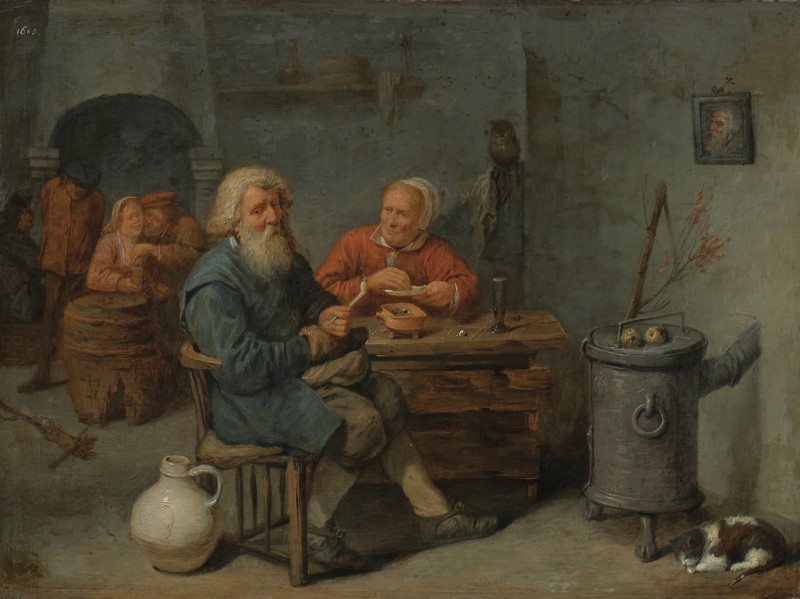Tavern scene
- Date
- 1st half of the 17th c.
- Object type
- painting
- Technique
- oil
- Material
- wood
- Dimensions
- 43,0 x 58,0 cm
- Location
- The Palace on the Isle - Picture Gallery, ground floor
- Marks and inscriptions
- white number 1685 of an unidentified collection, top left traces of the red number 964 of the Stanisław August collection, bottom left
- Place of Origin
- Antwerpia (Belgium)
- Owner
- National Museum in Warsaw
- Acquisition name
- deposit; inv. no. M.Ob.2467
- Museum number
- Dep 937
Van Haute dates the Łazienki Tavern Scene to c. 1642 based on affinities with two paintings by Rijckaert, which depict similar interiors with figures of smokers in the foreground: The Pipe Smoker, signed and dated 1640 at Christie’s in London … and Tavern interior with Smoking Peasants, signed and dated 1642, with R. Noortman Gallery, Maastricht … .
The paintings have an obvious moralizing tone: succumbing to addictions such as smoking and drinking and indulging in carnal desire is inappropriate. The folly of such conduct is reinforced by an owl, the symbol of wisdom, which is visible in the background, also in the above-mentioned Christie’s painting. The dry, cut off branch, sprouting a small branch and leaves is a motif which refers to the idea of the Resurrection ... , however, in the context of the Łazienki scene, it may also paradoxically be a phallic symbol (B. Van Haute, David Ryckaert: A Painter of A Seventeenth-Century Flemish Peasant Scenes, Turnhout 1999, no. A 46 and p. 34).
Rijckaert drew his inspiration from the paintings of his more famous colleagues: Adriaen Brouwer (an example of which is the typically Brouweresque pair of lovers in the Łazienki painting) and David Teniers the Younger (e.g. the figure of the Łazienki smoker, the way in which his stockings and shoes are painted, etc.); he was not, however, a mere imitator. One of the individual traits of his style is to include elements of still lifes in the interiors of his peasant abodes and inns: his faithful rendering of kitchen utensils, vessels and other items of everyday use are an important element of his compositions. ... [D. Juszczak, H. Małachowicz, The Stanisław August Collection of Paintings at the Royal Łazienki. Catalogue, Royal Łazienki Museum, Warsaw 2016, no. 88, pp. 328–330.]
